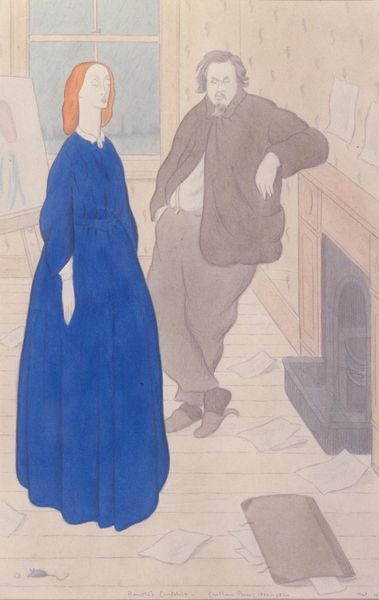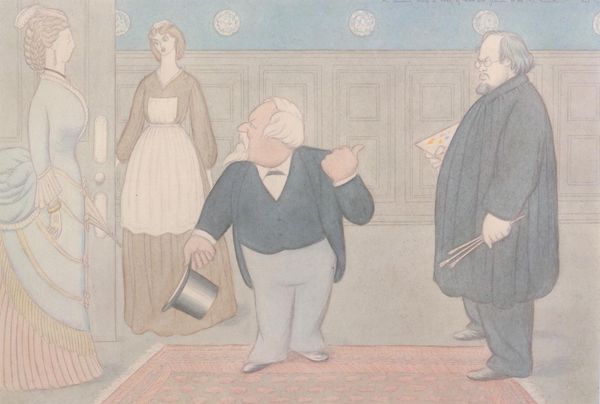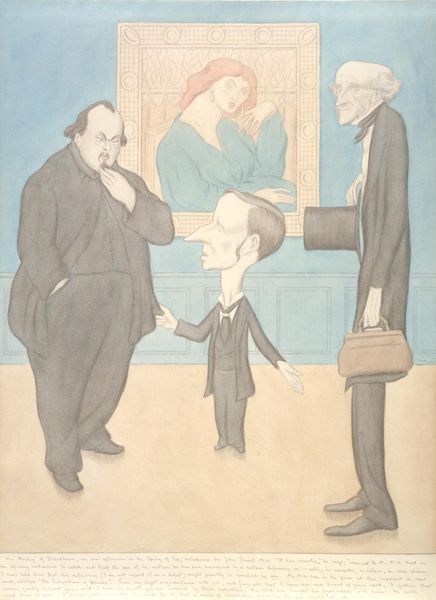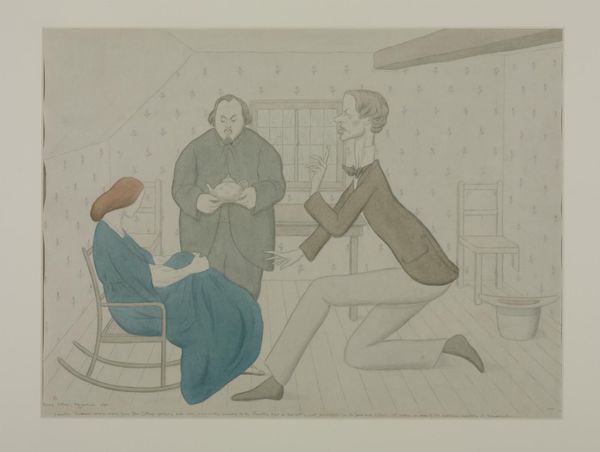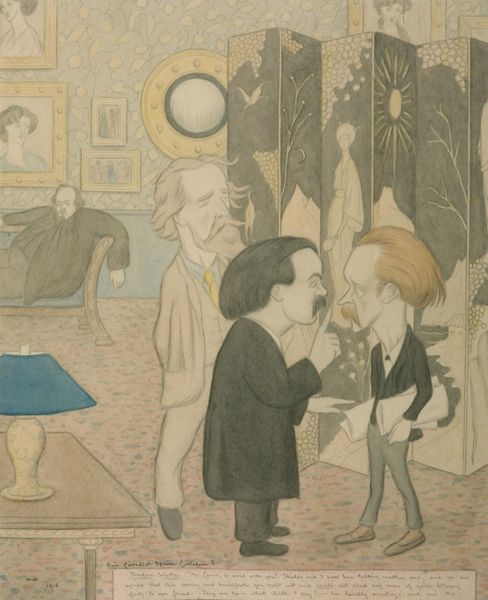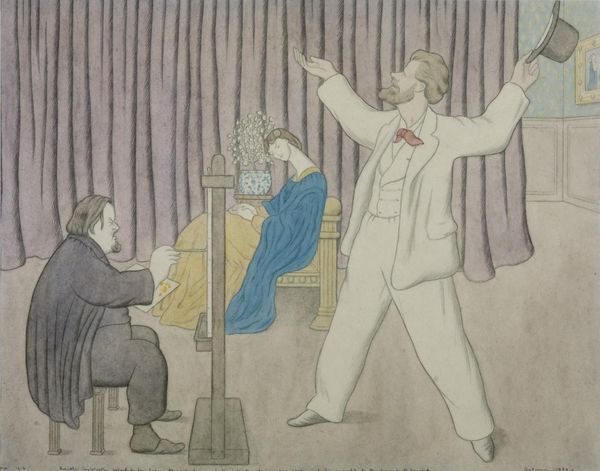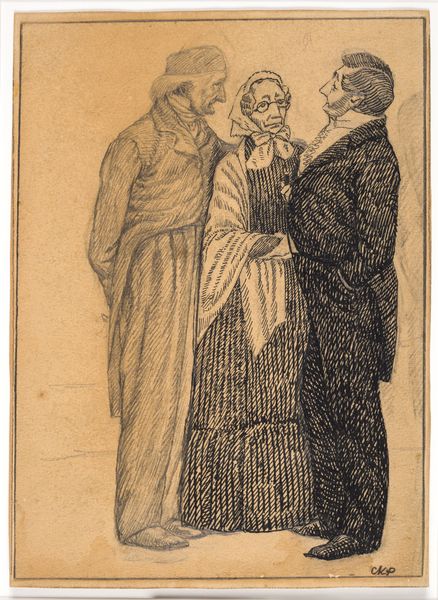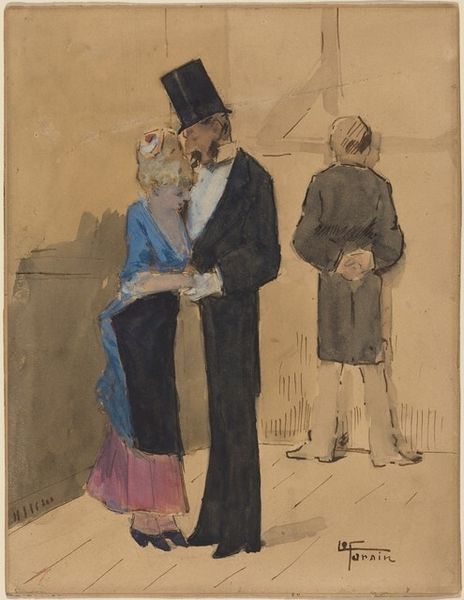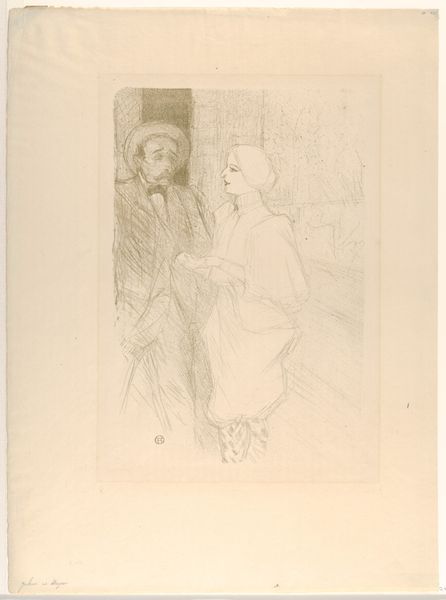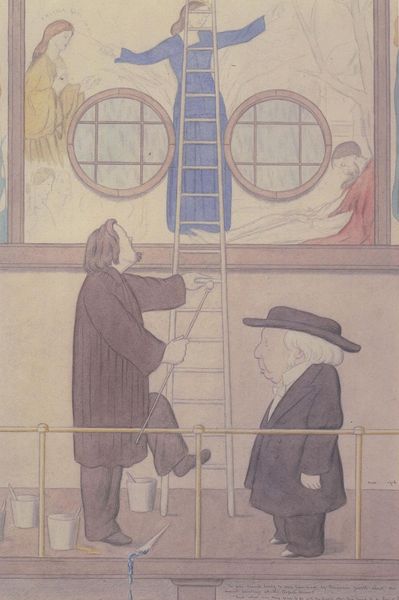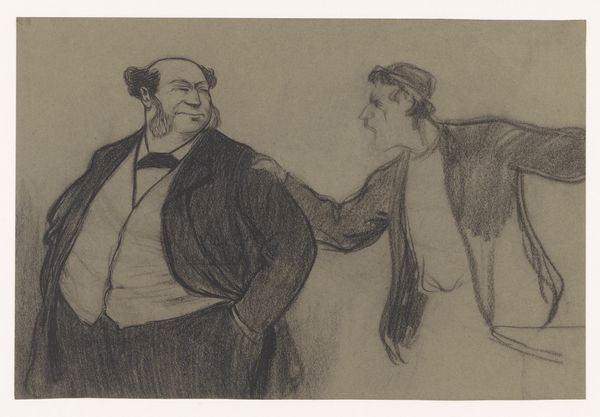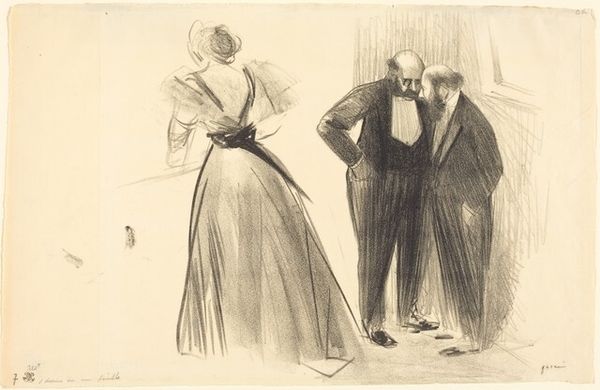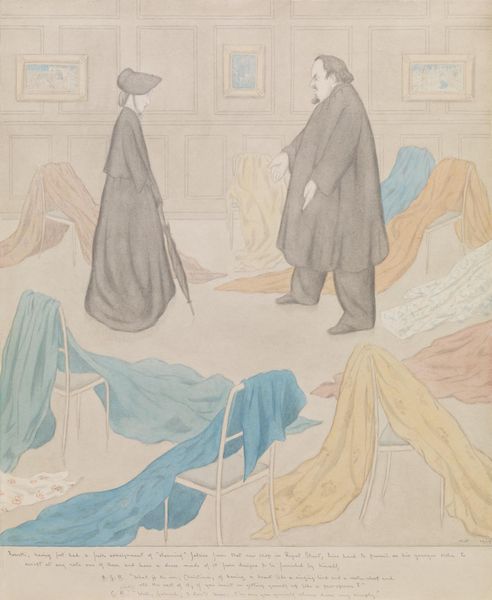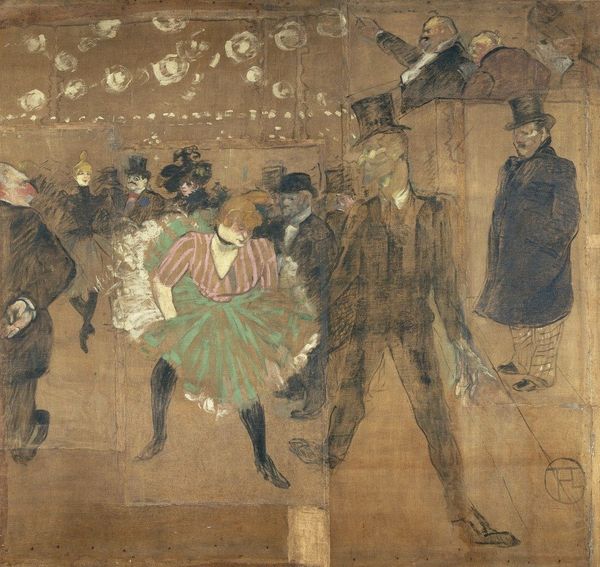
Dimensions: support: 330 x 248 mm
Copyright: © The estate of Max Beerbohm | CC-BY-NC-ND 4.0 DEED, Photo: Tate
Editor: This amusing watercolor drawing by Max Beerbohm depicts a fictional meeting between Miss Cornforth and Mr. Ruskin. It has a humorous tone. What sort of social commentary do you see in this image? Curator: Notice how Beerbohm plays with scale. Rossetti’s muse, Miss Cornforth, looms large, almost a caricature. Ruskin, the art critic, is diminutive. What does that imbalance suggest about their power dynamic, their roles in the art world at the time? Editor: It's almost like she's overwhelming him! Curator: Precisely. And what of the ghostly Pre-Raphaelite beauty lurking in the background? Whose gaze is more enduring, whose influence more keenly felt? Editor: It's fascinating how Beerbohm uses these visual cues to hint at deeper meanings. Thanks for your insight. Curator: The memory of images can be quite powerful, can't it?
Comments
tate 6 months ago
⋮
http://www.tate.org.uk/art/artworks/beerbohm-miss-cornforth-oh-very-pleased-to-meet-mr-ruskin-im-sure-a01042
Join the conversation
Join millions of artists and users on Artera today and experience the ultimate creative platform.
tate 6 months ago
⋮
The ideas of the young Burne-Jones were given definition and substance by his contact with Rossetti. But he also responded to John Ruskin's pronouncements on aesthetics. The two men first met in 1856 and became good friends, travelling to Italy together in 1862. Ruskin is seen here making the acquaintance of Fanny Cornforth, a prostitute who became Rossetti's model and mistress - surely an uneasy introduction. Although Beerbohm exaggerates the contrast between the frail art critic and the robust lovers, his humour is based on contemporary recollections. Indeed, the portly Rossetti's own pet name for Fanny was 'Elephant', while William Bell Scott described her as 'that three waisted creature'. Gallery label, July 1993
